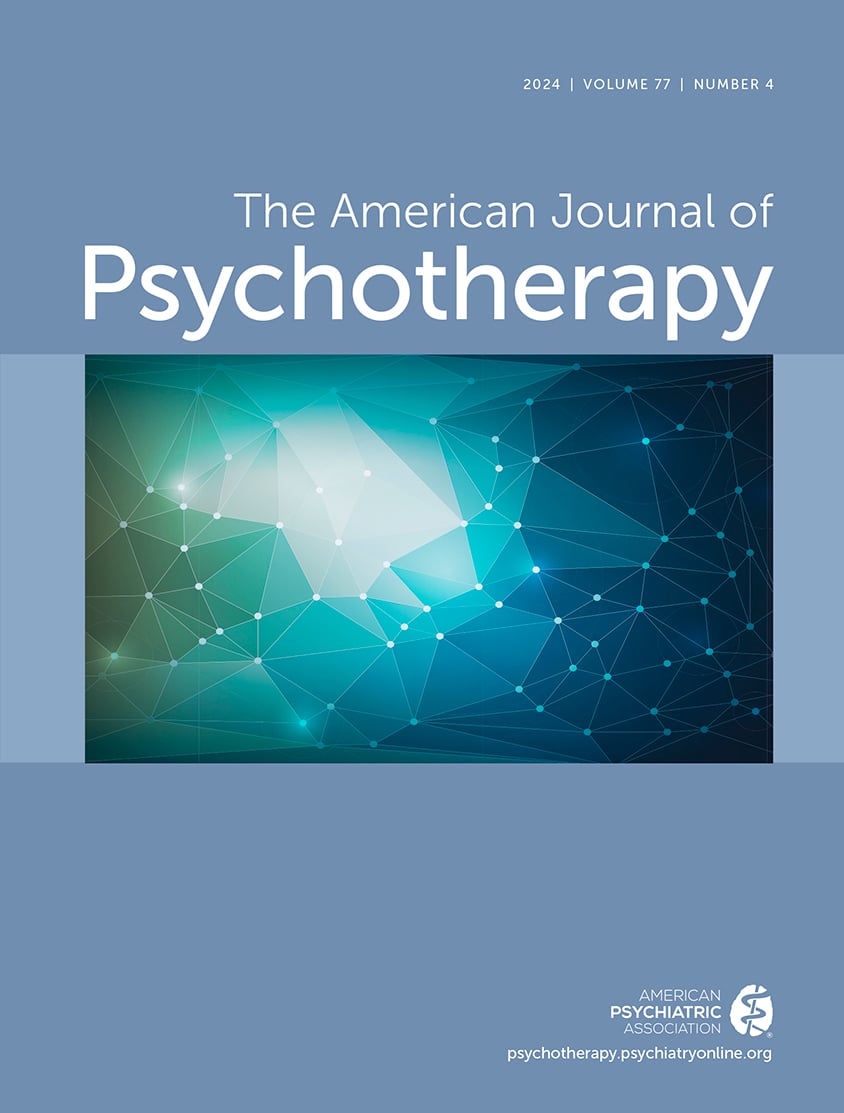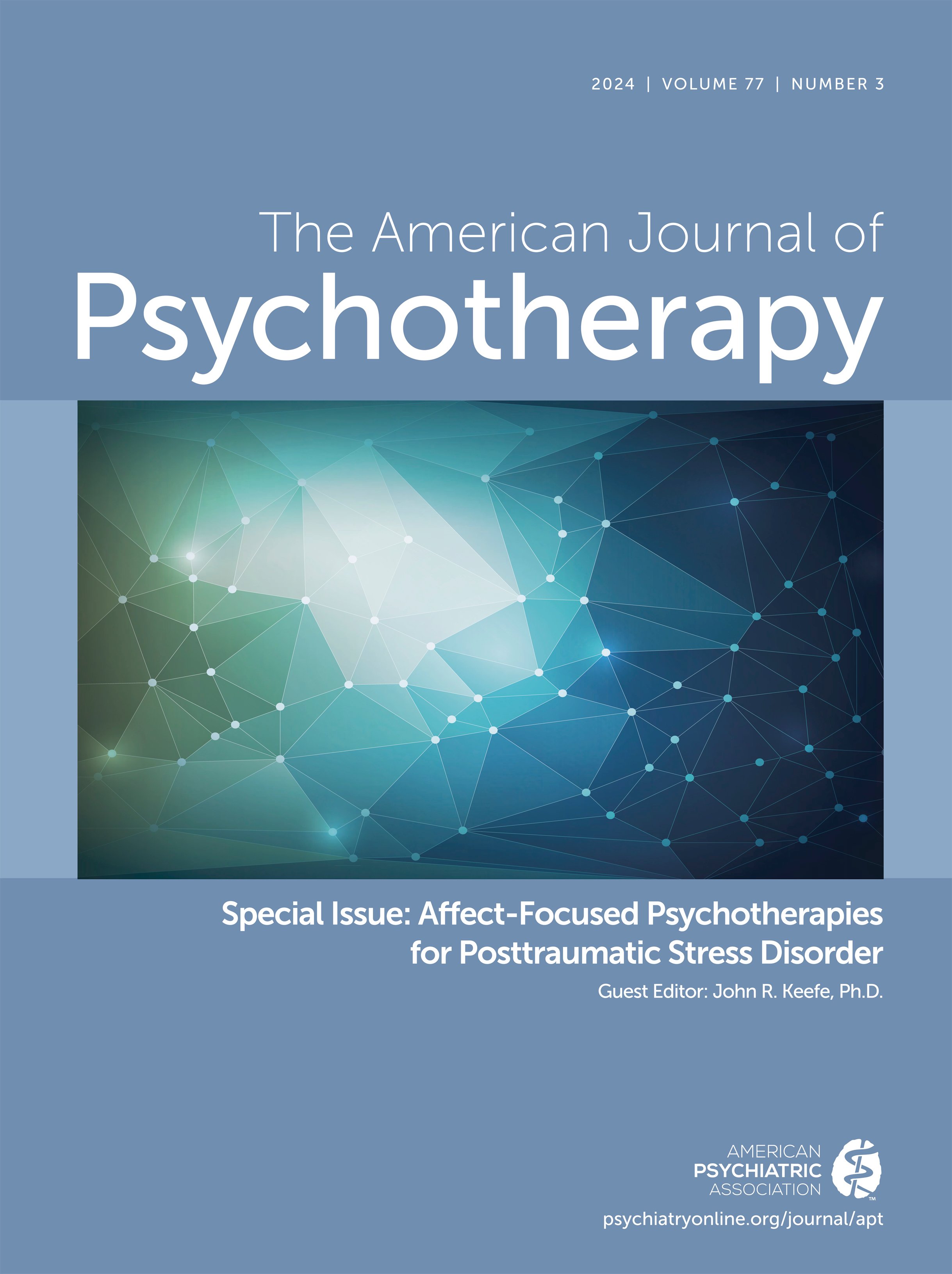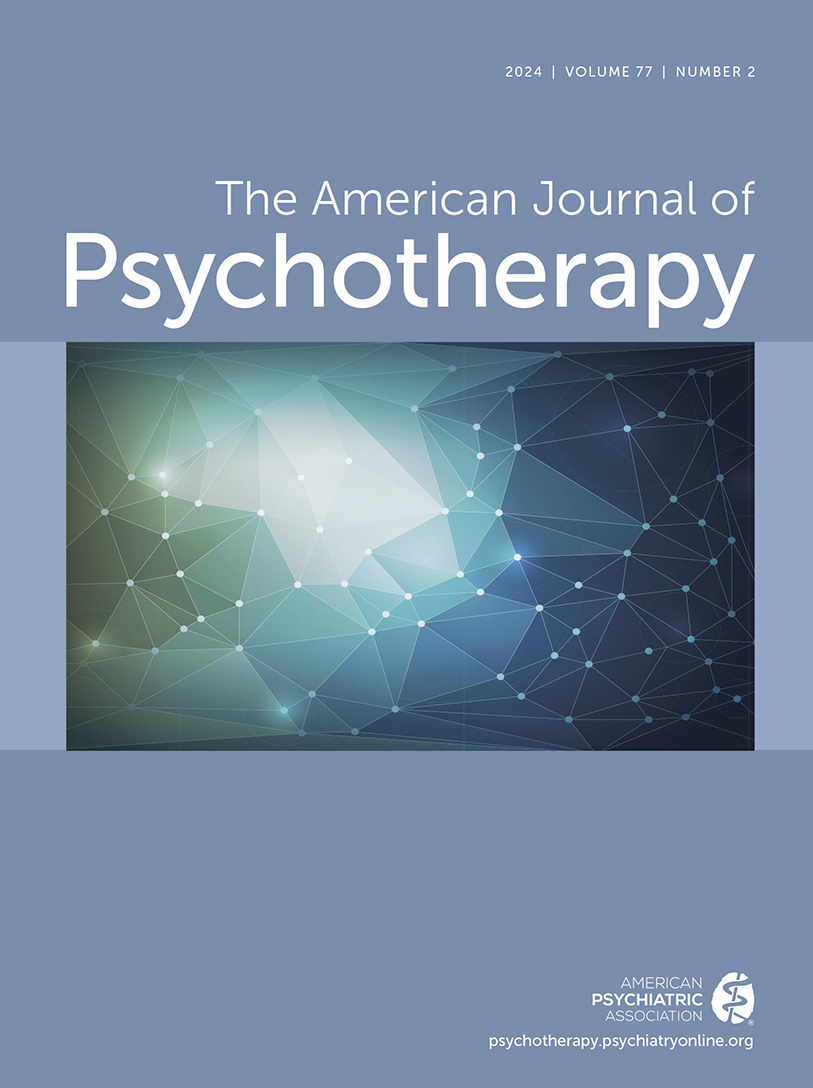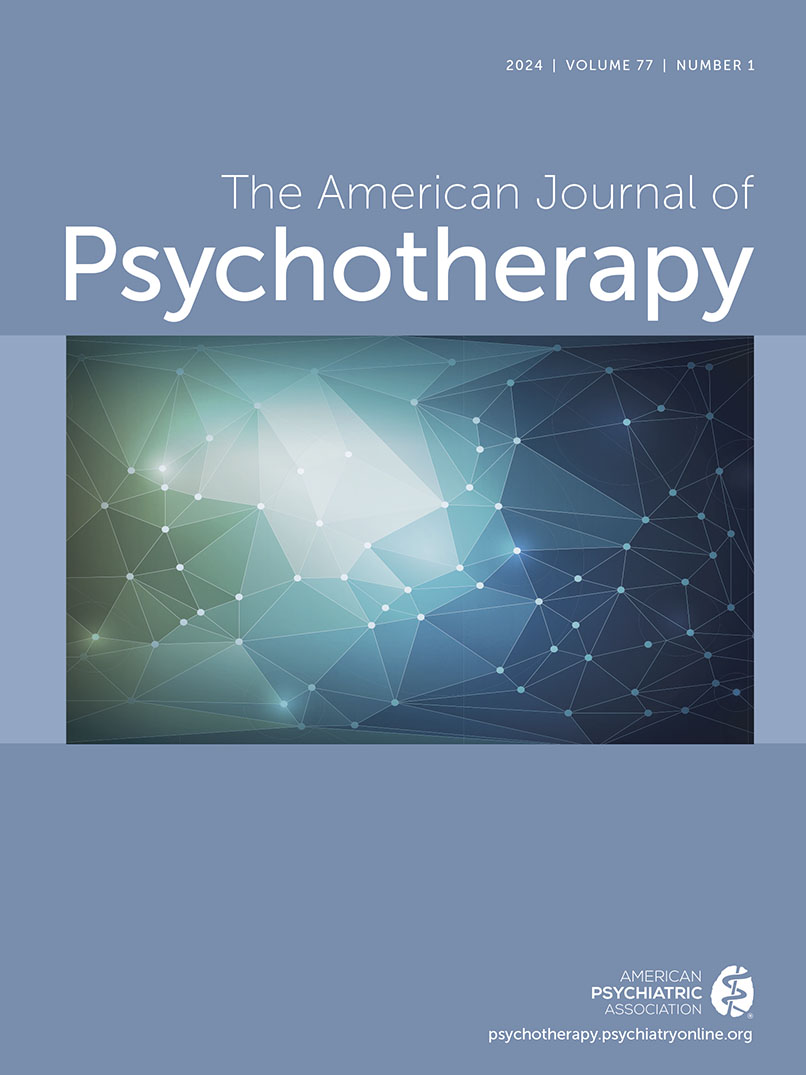American Journal of Psychotherapy
- Volume 39
- Number 3
- July 1985
Editorial
Articles
Publication date: 01 July 1985
Pages301–313Literature on treatment of childhood obsessive-compulsive disorder (OCD) is reviewed and evaluated in order to present a therapy update of the disorder since 1973. Sixteen treatment reports show a move toward eclecticism that blends biologic as well as ...
https://doi.org/10.1176/appi.psychotherapy.1985.39.3.301Publication date: 01 July 1985
Pages314–322This paper reviews the psychodynamics of phobic and obsessive-compulsive symptoms of mild severity and describes the techniques of short-term anxiety-provoking psychotherapy which are used to treat phobic and mildly obsessive-compulsive patients. Academic ...
https://doi.org/10.1176/appi.psychotherapy.1985.39.3.314Publication date: 01 July 1985
Pages323–330Psychotherapy of the obsessive-compulsive patient requires a modified psychoanalytic approach utilizing the concepts of a short-term therapy, which include focusing on relevant issues with limited goals. The therapist must be active, confronting, and must ...
https://doi.org/10.1176/appi.psychotherapy.1985.39.3.323Publication date: 01 July 1985
Pages331–345Management of people in this phobia clinic is based on a theory that phobias result from misinterpretations of the effects of a natural process that generates fear in responses to imagined dangers as in a nightmare. With support, guidance, exposure, and ...
https://doi.org/10.1176/appi.psychotherapy.1985.39.3.331Publication date: 01 July 1985
Pages346–359This paper reviews obsessive-compulsive behavior, both neurosis and character, and relates these to DSM-III, as well as to a psychodynamic classification of psychopathology. The DSM-III obsessive-compulsive disorder and the classical obsessive-compulsive ...
https://doi.org/10.1176/appi.psychotherapy.1985.39.3.346Publication date: 01 July 1985
Pages360–370Phobic and obsessive-compulsive disorders have long been believed to be infrequent in the general population and among persons in treatment. The most recent large-scale multicentered epidemiological study sponsored by NIMH shows startingly different ...
https://doi.org/10.1176/appi.psychotherapy.1985.39.3.360Publication date: 01 July 1985
Pages371–388Findings from empirical research and clinical practice are comprehensively integrated into a topography oj the agoraphobic syndrome. The following topics are discussed successively: the agoraphobic syndrome (core mechanism and life pattern), the ...
https://doi.org/10.1176/appi.psychotherapy.1985.39.3.371Publication date: 01 July 1985
Pages389–400This paper discusses the use and value of spontaneous puppet stories in child assessment. A procedure is described and the emergent form and content of story material are examined. These projective data, in turn, are used to further understand the ...
https://doi.org/10.1176/appi.psychotherapy.1985.39.3.389Publication date: 01 July 1985
Pages401–410This study of 29 female adolescents revealed a history of sexual abuse in 18 of the subjects. Four of the girls had an incest history. Results from the Brief Symptom Inventory (BSI) rating scale revealed two distinct kinds of symptom profiles: the ...
https://doi.org/10.1176/appi.psychotherapy.1985.39.3.401Publication date: 01 July 1985
Pages411–420The incidence of anorexia nervosa and bulimia has increased markedly during the last decade. Although numerous studies have appeared regarding the dynamics of the eating-disordered patient, few have attempted to link the unique pathology of these patients ...
https://doi.org/10.1176/appi.psychotherapy.1985.39.3.411Publication date: 01 July 1985
Pages421–430Current approaches to occupation-related psychiatric disturbances emphasize “stress coping” with a focus on person/work-environment fit. Although this approach is useful as a primary prevention strategy, we will continue to see those who even in an ...
https://doi.org/10.1176/appi.psychotherapy.1985.39.3.421Publication date: 01 July 1985
Pages431–439Group therapy is effective for both inpatient and outpatient schizophrenics. Homogeneous groups are preferred. Important technical issues include: encouraging contact with others; allowing limited expression of emotions; helping patients in reality ...
https://doi.org/10.1176/appi.psychotherapy.1985.39.3.431Book Review
Abstracts
Past Issues
View Issues Archive
Vol. 77 | No. 4

Vol. 77 | No. 3

Vol. 77 | No. 2
